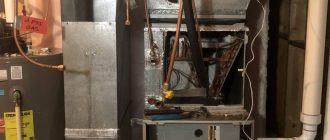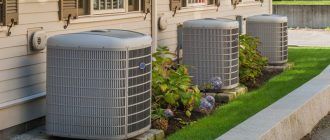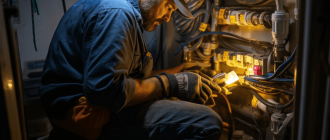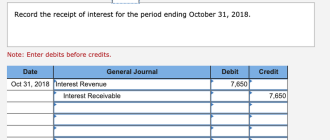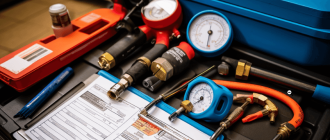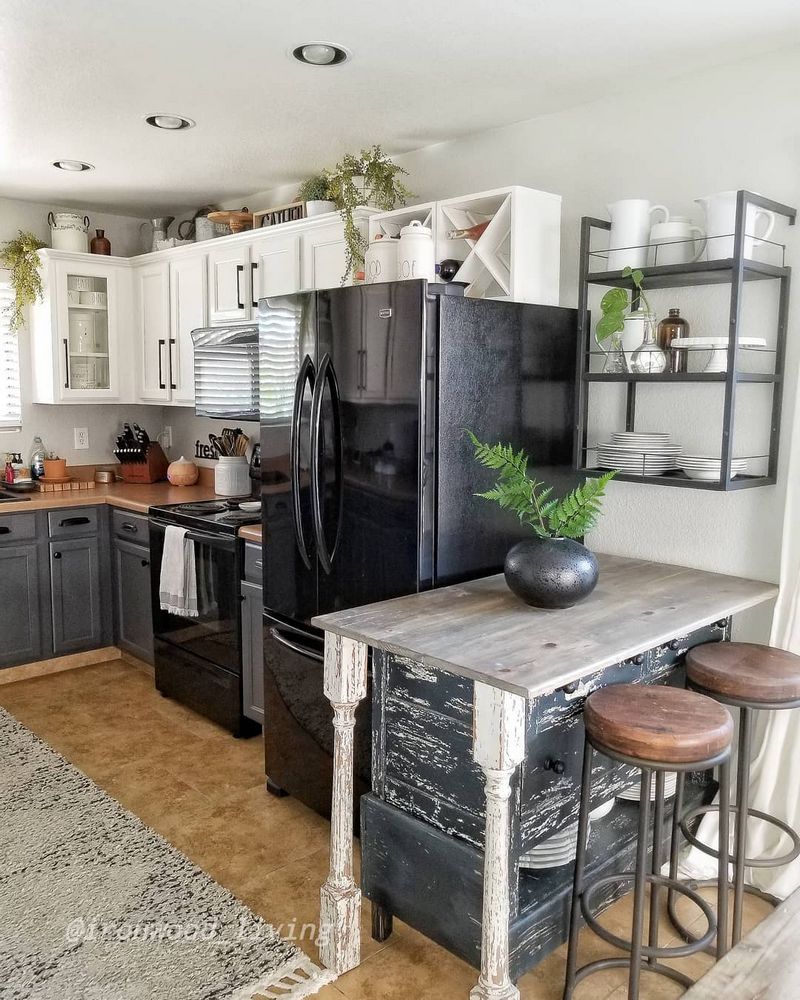
Seven Common Problems with Refrigerators
Refrigerators are essential appliances in any modern household. They help us keep our food fresh and prevent spoilage. However, like any other machine, refrigerators can experience problems from time to time. In this article, we will explore seven common issues that can occur with refrigerators and provide troubleshooting tips on how to fix them.
1. Refrigerator not cooling
One of the most common problems with refrigerators is when they fail to cool properly. This can be caused by a variety of factors, including a faulty thermostat, a clogged condenser coil, or a malfunctioning compressor. To troubleshoot this issue, check the temperature settings, clean the condenser coil, and listen for any unusual sounds coming from the compressor.
2. Leaking water
Another common problem is water leakage. This can be caused by a blocked defrost drain, a cracked water supply line, or a malfunctioning water inlet valve. If you notice water pooling at the bottom of your refrigerator, try clearing the defrost drain, inspecting the supply line for cracks, and testing the water inlet valve.
3. Freezer not freezing
If your freezer is not reaching the desired temperature or if the ice cream is melting, the issue could lie with the defrost control, the evaporator fan motor, or a faulty thermostat. To troubleshoot this problem, manually defrost the freezer, check the fan motor for any obstructions, and test the thermostat for continuity.
4. Excessive frost buildup
If you notice an excessive buildup of frost in your freezer, it could be due to a faulty defrost heater, a malfunctioning defrost thermostat, or a damaged gasket. To fix this issue, inspect the defrost heater for any signs of damage, test the defrost thermostat for continuity, and replace the gasket if necessary.
5. Noisy operation
If your refrigerator is making loud or unusual noises, it may be due to a faulty fan motor, a malfunctioning compressor, or an issue with the condenser fan. Check the fan motor for any obstructions, listen for abnormal sounds coming from the compressor, and inspect the condenser fan for any signs of damage.
6. Ice maker not working
If your ice maker is not producing ice or is producing small cubes or hollow ice, it could be due to a clogged water supply line, a faulty water inlet valve, or a malfunctioning ice maker motor. To troubleshoot this issue, check the water supply line for any obstructions, test the water inlet valve for continuity, and inspect the ice maker motor for any signs of damage.
7. Fridge too warm
If your refrigerator is warmer than usual, it may be due to a faulty temperature control, a blocked air vent, or a malfunctioning evaporator fan. Adjust the temperature control settings, ensure that the air vents are not blocked, and test the evaporator fan for proper operation.
By familiarizing yourself with these common problems and their troubleshooting methods, you can save time and money by attempting to fix your refrigerator yourself. However, if you are unsure or uncomfortable with performing any of these tasks, it is always best to call a professional technician to ensure safe and proper repairs.
If you are experiencing any of these refrigerator problems, don’t panic. Follow our troubleshooting tips to identify the issue and fix it in no time!
Refrigerator not cooling: How to diagnose and repair the issue
If your refrigerator is not cooling properly, it can be a common problem that can prevent your food from staying fresh and safe to consume. Thankfully, there are steps you can take to diagnose and repair the issue.
Here are seven common reasons why your refrigerator might not be cooling:
| Dirty condenser coils | Clean the coils using a coil brush or vacuum cleaner |
| Faulty evaporator fan motor | Replace the fan motor |
| Blocked air vents | Ensure the vents are not obstructed by food or debris |
| Faulty temperature control thermostat | Replace the thermostat |
| Malfunctioning defrost timer | Check and replace the defrost timer if necessary |
| Low refrigerant level | Call a professional to check for leaks and recharge the refrigerant |
| Defective compressor | Replace the compressor |
Before attempting any repairs, it is important to unplug the refrigerator and exercise caution while working with electrical components. If you are unsure or uncomfortable with any repair tasks, it is recommended to contact a professional technician to properly diagnose and fix the issue.
Remember, regular maintenance and cleaning of your refrigerator can help prevent some of these common cooling problems. By troubleshooting and addressing these issues, you can extend the life of your refrigerator and keep your food cool and fresh.
Strange noises coming from your refrigerator? Here’s how to troubleshoot them
If you’ve noticed strange noises coming from your refrigerator, it can be a sign of some common problems. Here’s how you can troubleshoot and fix them:
1. Buzzing or humming noises: This could be caused by a faulty condenser fan motor or compressor. Check if the noise is coming from the back of the refrigerator and inspect these parts for any damage. If necessary, replace the faulty components.
2. Clicking noises: Clicking noises might indicate a defective start relay or overload relay. These parts are responsible for starting the compressor. Inspect these components and replace them if needed.
3. Rattling or vibrating noises: Loose components can cause rattling or vibrating noises. Check if any screws or panels are loose and tighten them. Also, make sure the refrigerator is level and adjust the leveling feet if necessary.
4. Whistling or hissing noises: These noises could indicate a problem with the water inlet valve or the water lines. Inspect these parts and replace any damaged components.
5. Grinding or squealing noises: The evaporator fan motor or the fan blade might be responsible for these noises. Examine these parts for any damage and replace them if needed.
6. Popping or cracking noises: These noises are usually caused by the expansion and contraction of the refrigerator’s interior walls. They are normal and don’t require any action.
7. Gurgling or bubbling noises: These noises are typically heard when the refrigerator is defrosting. They are normal and occur as water is melting and draining away.
By troubleshooting these common problems, you can identify and fix the source of the strange noises coming from your refrigerator. If the problem persists or you’re unsure how to proceed, it’s best to consult a professional technician.
Water leaking from your refrigerator? Follow these steps to fix it
If you are experiencing water leaking from your refrigerator, it can be a cause for concern. However, there are several common problems that can cause this issue, and most of them can be easily fixed at home. Here are seven steps to troubleshoot and fix the problem:
1. Check the water supply line: Start by checking the water supply line that connects your refrigerator to the water source. Make sure it is securely connected and that there are no leaks or kinks in the line.
2. Inspect the water filter: If your refrigerator has a water filter, it may be clogged or in need of replacement. Check the filter and clean or replace it if necessary.
3. Clear the drain tube: A clogged drain tube can also cause water to leak from your refrigerator. Locate the drain tube at the back of the refrigerator and use a pipe cleaner or wire to clear any obstructions.
4. Check the defrost drain: The defrost drain is responsible for removing water from the freezer during the defrost cycle. If it becomes clogged, water can accumulate and leak out. Use a turkey baster or a small funnel to flush hot water down the drain and clear any blockages.
5. Inspect the ice maker: If your refrigerator has an ice maker, it may be the source of the water leak. Check the water inlet valve, the ice maker fill tube, and the ice maker assembly for any leaks or damaged parts. Replace or repair as needed.
6. Clean the condenser coils: Dirty condenser coils can cause your refrigerator to overheat, which can result in water leaks. Use a vacuum or a brush to remove any dust or debris from the coils at the back or bottom of your refrigerator.
7. Call a professional: If you have tried all of the above steps and the problem persists, it may be time to call a professional refrigerator repair technician. They will be able to properly diagnose and fix the issue.
By following these steps, you should be able to troubleshoot and fix most water leaking problems with your refrigerator. Remember to always exercise caution and turn off your refrigerator before performing any repairs or maintenance.
Ice maker not working? Learn how to troubleshoot and fix the problem
If your refrigerator’s ice maker is not working, it can be a frustrating situation, especially during the hot summer months when you need ice the most. However, this is a common problem that many refrigerators can experience, and there are several troubleshooting steps you can take to fix the issue.
1. Check the water supply
The first thing you should do is check the water supply to ensure that it is connected and turned on. Make sure the water line is not kinked or clogged, as this can prevent water from reaching the ice maker.
2. Inspect the water inlet valve
The water inlet valve controls the flow of water into the ice maker. If it is malfunctioning or clogged, it can prevent water from entering the ice maker. Check for any signs of damage or debris and replace the valve if necessary.
3. Clean the ice maker
Over time, mineral deposits can build up in the ice maker, affecting its performance. Use a soft cloth or sponge to clean the ice maker, removing any debris or deposits that may be blocking the water flow.
4. Check the ice maker’s temperature
The ice maker needs to be at the correct temperature to produce ice. Make sure that the freezer temperature is set at the proper level. If the temperature is too high, adjust it accordingly and give the ice maker some time to produce ice.
5. Inspect the ice maker’s components
Take a close look at the ice maker’s internal components, such as the ice mold, bail arm, and thermostat. Check for any signs of damage or malfunction and replace any faulty components if necessary.
6. Reset the ice maker
If none of the above steps resolve the issue, try resetting the ice maker. Consult your refrigerator’s manual for instructions on how to properly reset the ice maker. This can sometimes solve minor issues and get the ice maker working again.
7. Contact a professional
If you have tried all the troubleshooting steps and the ice maker is still not working, it may be time to call a professional repair technician. They will have the knowledge and experience to diagnose and fix more complex issues with your refrigerator’s ice maker.
By following these troubleshooting steps, you can often resolve common issues with refrigerators’ ice makers and get them working again. However, if you are unsure or uncomfortable with performing any repairs, it is always best to seek professional help to avoid causing further damage.
Refrigerator door not sealing properly? Here’s how to fix the issue
If your refrigerator door is not sealing properly, it can lead to several common problems. An improper seal can cause the refrigerator to run less efficiently, resulting in higher energy consumption and potentially spoiled food. Fortunately, there are steps you can take to troubleshoot and fix this issue.
Here are seven common reasons why your refrigerator door may not be sealing properly:
- Dirty or damaged gasket: The gasket is the rubber seal around the perimeter of the door. If it is dirty or damaged, it may not create a tight seal. Clean the gasket with warm soapy water and inspect for any tears or cracks. Replace the gasket if necessary.
- Misaligned door: If the door is not aligned properly, the gasket may not be able to seal correctly. Check the hinges and door alignment. Adjust if necessary to ensure the door closes evenly on all sides.
- Obstructed door: Make sure there are no items preventing the door from closing fully. Check for any food items or shelves that may be blocking the door from sealing properly.
- Uneven floor: If the refrigerator is not level due to an uneven floor, the door may not seal properly. Use a level to check the refrigerator and adjust the leveling feet as needed.
- Temperature settings: Incorrect temperature settings can cause the refrigerator to work harder, which may prevent the door from sealing properly. Make sure the temperature is set correctly for both the refrigerator and freezer compartments.
- Excessive frost buildup: Frost buildup in the freezer can prevent the door from closing tightly. Defrost the freezer and remove any excess frost to ensure a proper seal.
- Worn-out door hinges: Over time, door hinges can wear out, causing the door to sag and not close properly. Check the hinges for any signs of wear and replace if necessary.
By addressing these common issues, you can ensure that your refrigerator door seals properly and maintains its energy efficiency. If you are unable to fix the problem on your own, it may be necessary to consult a professional technician for further assistance.
Freezer not freezing food? Troubleshoot and solve the problem with these tips
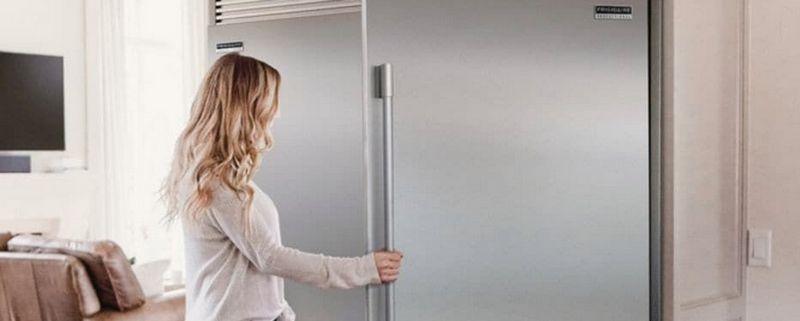
When it comes to refrigerators, there are a number of common problems that can arise. One of the most frustrating issues is when the freezer isn’t properly freezing food. This can lead to spoiled food and wasted money. Fortunately, there are several troubleshooting steps you can take to identify and solve the problem.
1. Check the temperature settings:
Start by checking the temperature settings on your freezer. Make sure it is set to a cold enough temperature, usually between 0 and 10 degrees Fahrenheit (-18 to -12 degrees Celsius). Adjust the settings if necessary and give the freezer some time to reach the desired temperature.
2. Clean the coils:
Dust and debris can accumulate on the coils located at the back or underneath the freezer. Use a vacuum or a brush to remove any buildup, as this can restrict airflow and affect the freezer’s cooling ability.
3. Ensure proper airflow:
Check for any obstructions to the airflow inside the freezer. Make sure there is enough space around the vents and shelves for air to circulate freely. Rearrange items if necessary to allow for proper airflow.
4. Verify the door seal:
A faulty door seal can cause warm air to enter the freezer, preventing it from properly freezing food. Inspect the seal for any visible damage or gaps. If needed, replace the seal to ensure a tight closure.
5. Monitor the freezer door:
Make sure the freezer door is closing fully and securely. A door that is not properly closed can result in loss of cold air. Check for any loose hinges or misaligned latches that may need adjustment or repair.
6. Limit door openings:
Frequent door openings can disrupt the freezing process. Try to minimize the number and duration of door openings, as this can cause the temperature inside the freezer to rise.
7. Check the defrost function:
If your freezer has a self-defrosting feature, make sure it is functioning correctly. A malfunctioning defrost system can lead to frost buildup and uneven cooling. Consult the manufacturer’s manual for instructions on how to troubleshoot and fix any issues.
By following these troubleshooting tips, you should be able to identify and resolve the problem of your freezer not freezing food. If the issue persists, it may be necessary to contact a professional repair service to diagnose and fix the problem.
Refrigerator running constantly? Find out the possible causes and solutions
If your refrigerator seems to be running constantly, it could be indicative of a problem. A refrigerator that never stops running not only consumes excessive energy, but it can also lead to temperature fluctuations and potential food spoilage. Here are some common causes for a constantly running refrigerator and their possible solutions:
| Clogged Condenser Coils | Regularly clean the condenser coils at the back of the refrigerator to remove dust and debris that can impede heat dissipation. |
| Faulty Evaporator Fan Motor | Check if the evaporator fan motor is working properly. If it’s not running, replace it to ensure proper air circulation in the refrigerator. |
| Defective Thermostat | Test the thermostat for accuracy. If it’s not functioning correctly, replace it to maintain the desired temperature and prevent the refrigerator from running continuously. |
| Poor Door Seals | Inspect the door seals for any signs of damage or wear. Replace the seals if necessary to create a tight seal and prevent cold air from escaping, causing the refrigerator to run constantly. |
| Inadequate Air Circulation | Ensure that there is enough space around the refrigerator for proper air circulation. Move any objects blocking the vents to allow for better airflow and prevent the fridge from overworking. |
| Faulty Defrost Timer | If the defrost timer is malfunctioning, it can cause the refrigerator to run continuously. Replace the timer if necessary to restore proper defrost cycles. |
| Overloading the Refrigerator | A refrigerator that is overloaded with food can put excessive strain on the compressor, causing it to run constantly. Remove any unnecessary items or redistribute the load to alleviate the strain. |
If none of these solutions resolve the issue and your refrigerator continues to run constantly, it may be best to consult a professional technician to diagnose and fix the problem. Remember, regular maintenance and proper usage can help prevent common refrigerator problems and extend its lifespan.
Condensation inside your refrigerator? Follow these steps to resolve the issue
If you notice condensation building up inside your refrigerator, it is a common problem many people face with their refrigerators. This can lead to mold and mildew growth, as well as slippery shelves and a generally unpleasant experience. However, with a few troubleshooting steps, you can easily resolve this issue.
1. Check the door seals: Make sure the door seals are clean and in good condition. Any gaps or cracks in the seals can allow warm air to enter the refrigerator, causing condensation. If you notice any damage, replace the seals.
2. Adjust the temperature: If the temperature inside your refrigerator is set too low, it can cause excess moisture to accumulate and result in condensation. Check the temperature settings and adjust them accordingly. Keeping the temperature between 37-40°F (3-4°C) is ideal for preventing condensation.
3. Allow room for air circulation: Ensure that there is enough space around the refrigerator for proper air circulation. Blocked vents or tight spaces can restrict airflow and lead to condensation. Keep at least 2 inches of space between the refrigerator and the wall.
4. Minimize food and liquid placement: Overstocking your refrigerator or placing hot items inside can increase humidity levels, leading to condensation. Try to minimize the amount of food and beverages stored in your refrigerator and allow hot items to cool down before placing them inside.
5. Keep the refrigerator clean: Regularly clean the interior of your refrigerator to prevent any spilled liquids or food debris from contributing to excess moisture. Wipe away any moisture or condensation that has accumulated using a clean, dry cloth.
6. Check the humidity levels: If the humidity levels in your kitchen are high, it can affect the moisture levels inside your refrigerator. Use a dehumidifier in your kitchen or open a window to reduce humidity levels and prevent condensation.
7. Monitor the refrigerator usage: Finally, pay attention to how often you open the refrigerator doors and for how long. Frequent and prolonged opening of the refrigerator can cause warm air to enter, leading to condensation. Try to minimize the duration and frequency of door openings.
By following these troubleshooting steps, you can effectively resolve the issue of condensation inside your refrigerator. However, if the problem persists, it may be best to consult a professional technician for further assistance.
Bad odor coming from your refrigerator? Here’s how to eliminate it
If you’re experiencing a bad odor coming from your refrigerator, it can be quite unpleasant. However, there are several steps you can take to troubleshoot and eliminate the odor. Follow this guide to get your refrigerator smelling fresh again.
1. Clean out old and expired foods: Start by removing all the items from your refrigerator and check for any spoiled, rotten, or expired food. Thoroughly clean any spills or leaks that may have caused the odor.
2. Empty and clean the drip pan: The drip pan, located at the bottom of the refrigerator, can collect water and debris which can lead to unpleasant odors. Empty and clean the drip pan using a mixture of hot water and vinegar.
3. Check the refrigerator seal: A faulty or damaged seal can cause air leaks, leading to the accumulation of moisture and mold growth. Inspect the seal and replace it if necessary.
4. Clean the interior: Mix a solution of warm water and baking soda. Use a sponge or cloth to wipe down the interior surfaces of the refrigerator, including the shelves, racks, and drawers. This will help remove any lingering odors.
5. Use activated charcoal: Place a bowl of activated charcoal, also known as activated carbon, in your refrigerator. Activated charcoal absorbs odors and can help neutralize any bad smells.
6. Keep an open box of baking soda: Baking soda is another effective odor absorber. Leave an open box of baking soda in your refrigerator to help eliminate any unwanted smells.
7. Regularly clean and maintain your refrigerator: To prevent odors from recurring, it’s important to regularly clean and maintain your refrigerator. Wipe up spills promptly, check for any issues with the temperature or defrost settings, and inspect the door seal periodically.
By following these troubleshooting steps and practicing regular maintenance, you can tackle any bad odor problems in your refrigerator and keep it smelling fresh and clean.
Refrigerator not defrosting? Learn how to troubleshoot and fix the problem
If you are experiencing issues with your refrigerator not defrosting, you may be dealing with one of the seven common problems that can occur with refrigerators. By troubleshooting and fixing the problem, you can ensure that your refrigerator works efficiently and effectively once again.
1. Check the defrost timer: The defrost timer controls when the defrost cycle starts and stops. If the timer is malfunctioning, it may prevent the refrigerator from defrosting properly. Try manually advancing the timer to see if the unit begins to defrost.
2. Inspect the defrost heater: The defrost heater is responsible for melting the ice and frost that accumulates on the evaporator coils. If the defrost heater is faulty, it can lead to a buildup of ice and prevent the refrigerator from defrosting. Use a multimeter to test the continuity of the heater and replace it if necessary.
3. Test the defrost thermostat: The defrost thermostat is designed to turn off the defrost heater when the temperature reaches a specific level. If the thermostat is not functioning correctly, it may prevent the heater from turning on and defrosting the coils. Test the thermostat for continuity and replace it if needed.
4. Clean the condenser coils: Dust and debris can accumulate on the condenser coils, inhibiting the refrigerator’s ability to cool properly. This can cause the freezer to not defrost properly. Use a vacuum or brush to clean the coils and improve airflow.
5. Check the evaporator fan motor: The evaporator fan motor is responsible for circulating air over the evaporator coils, which helps defrost the freezer. If the motor is not running, it can hinder the defrosting process. Test the motor for continuity and replace it if necessary.
6. Verify proper airflow: Ensure that there is proper airflow inside the refrigerator by checking the vents and ensuring they are not blocked by food items. Blocked vents can impede the defrosting process.
7. Inspect the door gaskets: Damaged or worn-out door gaskets can allow warm air to enter the refrigerator, causing excessive frost buildup and preventing proper defrosting. Check the gaskets for visible damage and replace them if needed.
By troubleshooting and addressing these common problems, you can successfully fix the issue of your refrigerator not defrosting. Always refer to the manufacturer’s instructions and consult a professional if needed.
Ice buildup in your refrigerator? Follow these steps to prevent and remove it
- Check the temperature settings: Make sure the temperature settings in your refrigerator are set correctly. If the temperature is too low, it can cause excess moisture and ice buildup. Adjust the settings if needed.
- Inspect the door seals: Check the seals on the refrigerator door to ensure they are in good condition and properly sealing. If there are any cracks or gaps, replace the seals to prevent warm air from entering and causing condensation.
- Allow proper airflow: Ensure that there is enough space between the walls of the refrigerator and the food items stored. Adequate airflow helps to prevent moisture buildup and ice formation.
- Minimize door openings: Try to limit the number and duration of door openings. Each time the refrigerator door is opened, warm air enters, which can contribute to ice buildup. Be mindful of this to maintain a consistent temperature.
- Regularly defrost your freezer: If you have a refrigerator with a freezer compartment, make sure to regularly defrost it. Over time, ice can accumulate and cause excessive frost in both the freezer and refrigerator sections.
- Keep the refrigerator clean: Regularly clean the interior of your refrigerator, including the shelves and drawers. This helps to remove any moisture or spills that could lead to ice buildup. Additionally, a clean refrigerator is more efficient at maintaining proper temperatures.
- Monitor humidity levels: Excess humidity can contribute to ice buildup. Consider using a dehumidifier in your kitchen or placing moisture-absorbing products, such as baking soda or charcoal, inside your refrigerator to help absorb moisture.
By following these steps, you can effectively prevent and remove ice buildup in your refrigerator, ensuring that it operates efficiently and keeps your food fresh for longer.
Q&A:
Why is my refrigerator not cooling?
There could be several reasons why your refrigerator is not cooling. One common problem is a malfunctioning condenser coil, which can be caused by dust and debris buildup. Another potential issue could be a faulty thermostat or a problem with the compressor. It’s best to call a professional technician to diagnose and fix the problem.
How do I defrost a freezer that is not working?
If your freezer is not working, it’s important to first unplug the appliance and remove all the food. Then, you can manually defrost the freezer by placing towels or a shallow pan of hot water in the freezer. Leave the door open to allow the ice to melt. Once the ice has melted, clean the freezer and plug it back in. If the problem persists, you may need to call a professional for further assistance.
Why is my refrigerator making strange noises?
If your refrigerator is making strange noises, it could be due to a few different issues. The most common problem is a faulty condenser fan motor or evaporator fan motor. These motors can become unbalanced or worn out over time, resulting in unusual noises. Another possible cause could be a loose or worn-out compressor. It’s best to have a professional technician inspect and repair your refrigerator to eliminate the noise.
My refrigerator is leaking water. What should I do?
If your refrigerator is leaking water, there are a few potential causes. One possibility is a clogged defrost drain, which can be cleared by using a turkey baster or a pipe cleaner. Another common culprit is a cracked or overflowing water supply line. You can try tightening any loose connections or replacing the water supply line if necessary. If the problem persists, it’s recommended to contact a professional to fix the issue.
Why is my refrigerator constantly running?
There are a few reasons why your refrigerator may be running constantly. One possibility is a malfunctioning thermostat, which could be causing the refrigerator to think it needs to stay on all the time. Another potential cause could be a dirty condenser coil, preventing the refrigerator from efficiently cooling down. It’s best to clean the condenser coil and check the thermostat settings. If the problem persists, it’s recommended to call a professional for further inspection.
Why is my refrigerator not cooling properly?
There could be several reasons why your refrigerator is not cooling properly. The most common cause is a dirty condenser coil, which can be easily cleaned. Other possible causes include a faulty thermostat, a malfunctioning compressor, or a restricted airflow due to a blocked vent or clogged air filter.

